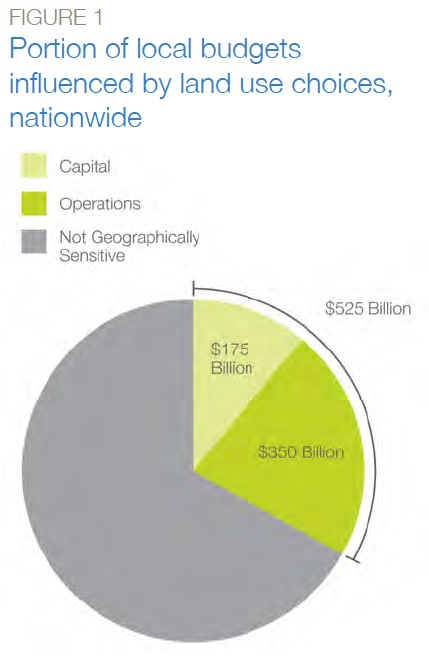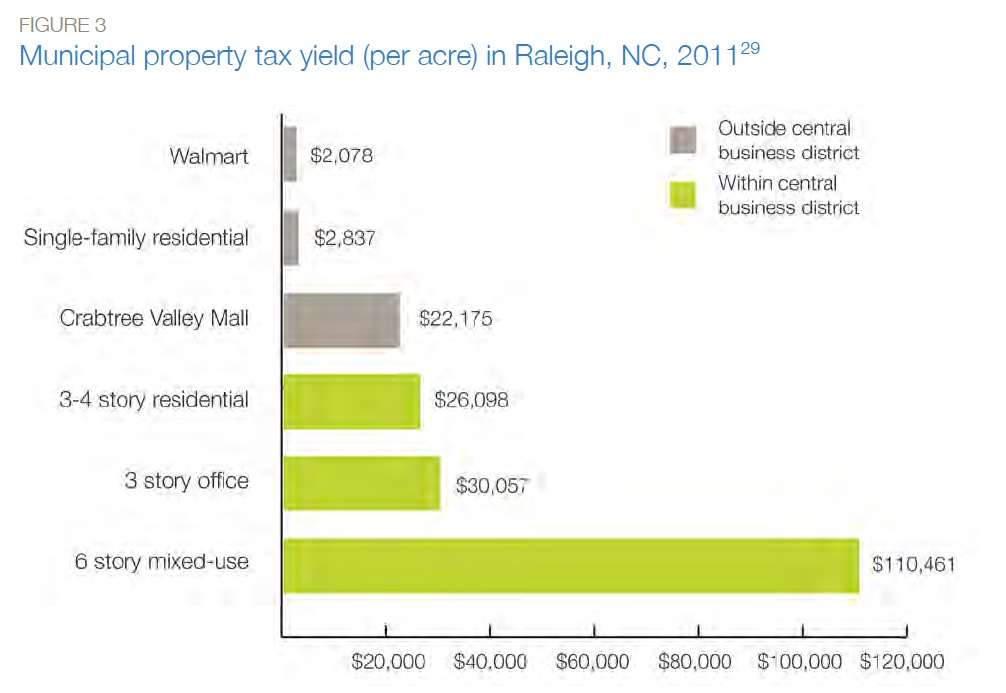SMART GROWTH AMERICA
Local governments across the country have compared development strategies to understand their impact on municipal finances. These studies generally compare two or more different development scenarios, and help local leaders make informed decisions about new development based on the costs or revenues associated with them.
Many municipalities have found that a smart growth approach would improve their financial bottom line. Whether by saving money on upfront infrastructure; reducing the cost of ongoing services like fire, police and ambulance; or by generating greater tax revenues in years to come, community after community has found that smart growth development would benefit their overall financial health. Many of these findings have been made publicly available.
No national survey has examined these savings as a whole until now. This report is the first to aggregate those comparisons and determine a national average of how much other communities can expect to save by using smart growth strategies.
Building Better Budgets: A National Examination of the Fiscal Benefits of Smart Growth Development surveys 17 studies that compare different development scenarios, including a brandnew study of Nashville-Davidson County, TN, commissioned specifically for this report.
The development scenarios included in our analysis are separated into two categories: “Smart growth development” is characterized by more efficient use of land; a mixture of homes, businesses and services located closer together; and better connections between streets and neighborhoods. “Conventional suburban development” is characterized by less efficient use of land with homes, schools and businesses separated and areas designed primarily for driving. While not all studies use these terms, the scenarios in each category share many of these defining traits. A detailed discussion of individual studies is included in the appendices of this report.
The report looks at the costs associated with each development strategy as well as its revenue potential. When compared to one another, we find:
1. In general, smart growth development costs one-third less for upfront infrastructure.
Our survey concluded that smart growth development saves an average of 38 percent on upfront costs for new construction of roads, sewers, water lines and other infrastructure. Many studies have concluded that this number is as high as 50 percent. Smart growth development patterns require less infrastructure, meaning upfront capital costs, long-term operations and maintenance costs, and, presumably, cost for eventual replacement are all lower. Smart growth development also often uses existing infrastructure, lowering upfront capital costs even more.
2. Smart growth development saves an average of 10 percent on ongoing delivery of services.
Our survey concluded that smart growth development saves municipalities an average of 10 percent on police, ambulance and fire service costs.
The geographical configuration of a community and the way streets are connected significantly affect public service delivery. Smart growth patterns can reduce costs simply by reducing the distances service vehicles must drive. In some cases, the actual number of vehicles and facilities can also be reduced along with the personnel required.
3. Smart growth development generates 10 times more tax revenue per acre than conventional suburban development.
Our survey concluded that, on an average per-acre basis, smart growth development produces 10 times more tax revenue than conventional suburban development.
About Smart Growth America
www.smartgrowthamerica.org
“Smart Growth America advocates for people who want to live and work in great neighborhoods. We believe smart growth solutions support thriving businesses and jobs, provide more options for how people get around and make it more affordable to live near work and the grocery store. Our coalition works with communities to fight sprawl and save money. We are making America’s neighborhoods great together.”
Tags: NC, North Carolina, Raleigh, Smart Growth America, sprawl








 RSS Feed
RSS Feed